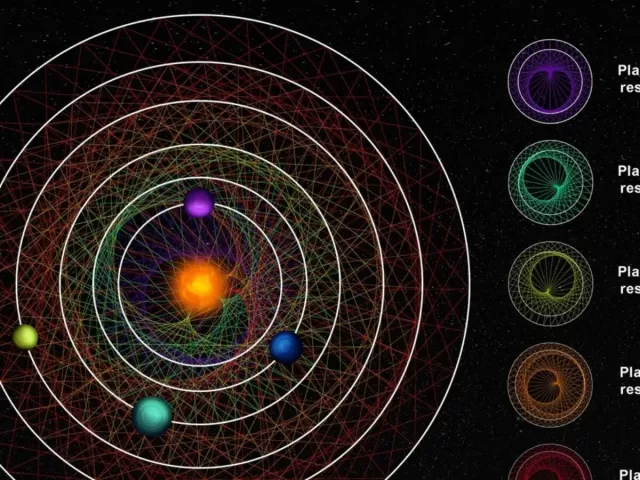Unlocking Celestial Secrets: Synchronized Sub-Neptunes in a Galactic Ballet
Dec 30, 2023
In the vast expanse of our Milky Way galaxy, astronomers are captivated by a distinctive class of planets known as "sub-Neptunes." These celestial entities, with dimensions ranging from two to three times the diameter of Earth but smaller than Neptune, gracefully orbit stars, venturing closer than Mercury does to the sun in our solar system.

In the vast expanse of our Milky Way galaxy, astronomers are captivated by a distinctive class of planets known as "sub-Neptunes." These celestial entities, with dimensions ranging from two to three times the diameter of Earth but smaller than Neptune, gracefully orbit stars, venturing closer than Mercury does to the sun in our solar system.
A recent astronomical revelation unveils a breakthrough: six synchronized sub-Neptunes encircling a star nearly 20% smaller than our sun. This discovery stands as a ray of hope for scientists seeking answers to the mysterious nature of these planets, which are notably absent from our solar system.
The six planets exhibit a rare celestial dance called orbital resonance, indicating that their synchronized orbits around the star have endured, unchanged, for an astonishing 4 billion years. This enduring stability suggests the absence of disruptive events, such as giant impacts, capable of perturbing their orbits.
Astronomer Hugh Osborn, associated with the University of Bern in Switzerland, finds the resonance aspect particularly captivating, acknowledging the mathematical beauty it encapsulates. He emphasizes the system's potential to unlock the secrets of sub-Neptune planets, which are distinctly different from their Earth-like counterparts.
Despite the identification of numerous sub-Neptunes, their composition remains an active realm of exploration. The delicate interplay of rock, water, and atmospheric components intricately determines their mass, radius, and density. The recently discovered sub-Neptunes span from 1.9 to 2.9 times Earth's diameter, each adorned with substantial atmospheres.
Researchers, led by University of Chicago astronomer Rafael Luque, have delved into diverse hypotheses regarding the composition of sub-Neptunes. The possibilities range from rocky planets enveloped in thick atmospheres of hydrogen and helium to planets composed of rock and ice, boasting warm, water-rich atmospheres.
Differing from Earth, with a diameter of about 7,900 miles (12,750 km), or Neptune, the smallest gas giant in our solar system with a diameter of around 30,600 miles (49,250 km), these sub-Neptunes span a size range from 1.9 to 2.9 times Earth's diameter. Their celestial host, named HD110067, graces Earth's night sky in the Coma Berenices constellation, positioned about 100 light-years away.
The identification of these planets involved observing subtle brightness dips in the host star as the planets traversed in front of it from Earth's perspective. With orbits varying from approximately nine to 54 days, these planets encircle the star within 6% to 20% of the distance from Earth to the sun.
While these sub-Neptunes reside beyond the conventional habitable zone for terrestrial planets, the region optimal for hosting life, their atmospheres wield the potential to influence surface temperatures. This characteristic introduces a more flexible perspective on the habitable zone concept for sub-Neptunes.
The astronomical community eagerly anticipates the James Webb Space Telescope (JWST), operational since last year, to play a pivotal role in unraveling the mysteries of these sub-Neptunes, contributing invaluable insights to our understanding of these celestial enigmas.
